My friend Nadia wrote me last month and asked if I could identify some seeds which were given to her by a friend who found them on the island of Mauritius.
Here is Nadia looking very happy to have some seeds:
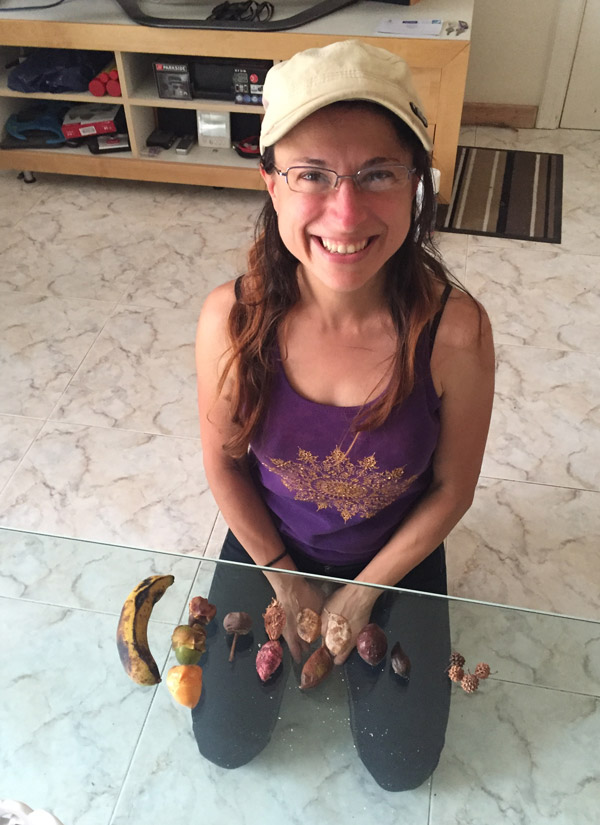
Unfortunately for her, I am a terrible person and lost her email and the pictures until this week.
Here is a close-up picture of the seeds, plus a banana for scale:
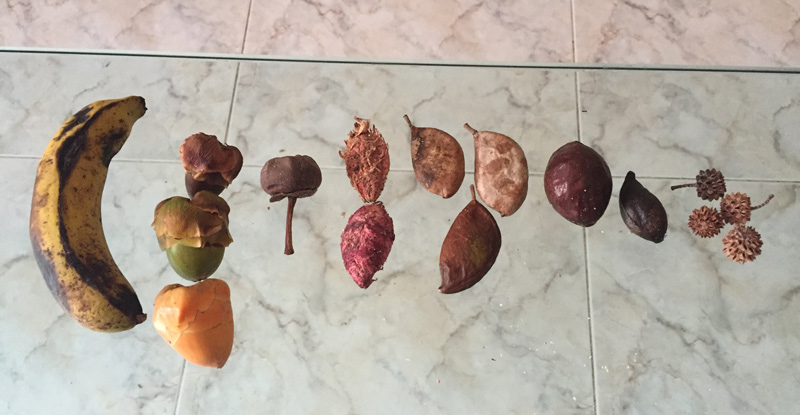
The wild thing about drift seeds is that you’ll see the same species again and again around the world. Though Nadia lives a long way away from me, I know these seeds and we have most of these species growing locally.
To make it easy for everyone, I created a beach seed ID chart from the photo she sent.
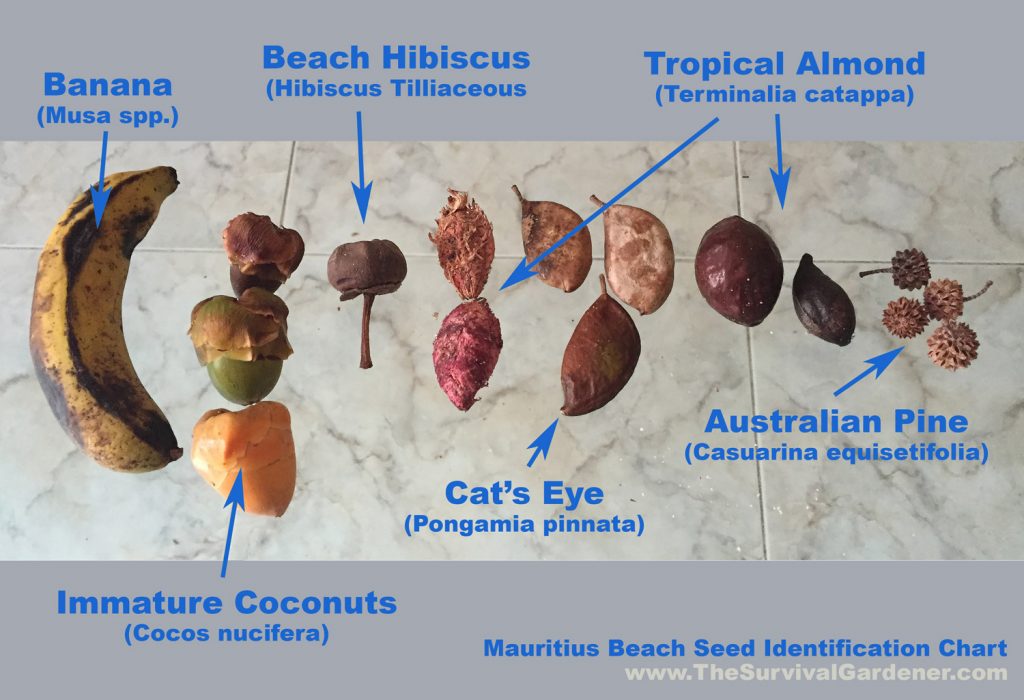
Isn’t Photoshop amazing? How professional that looks! How scientific!
Let’s take a look at how they grow.
Bananas and Coconuts
First, don’t plant the banana. It will disappoint you.
Second, the coconuts are too young. Mourn for their early departure from this mortal coil, then throw them at someone you don’t like.
Beach Hibiscus
The beach hibiscus pod simply needs to be broken open and the hard seeds inside can be planted. The trees usually live along the seashore but should do fine inland. They’re pretty trees and often grow in big stands. They’re generally less than 20′ tall. You can read more on them here.
Tropical Almond
I love the tropical almond tree.
The nuts have edible kernels and the wood is beautiful.
In your photos, the fruit on the left have had their outer husks rotted away; the two on the right still have some of the fruit attached. That’s why they look different. Plant the seeds in a pot and keep them watered.
Maybe a few will come up. I grew this one from a seed – it’s planted in my parents’ side yard:
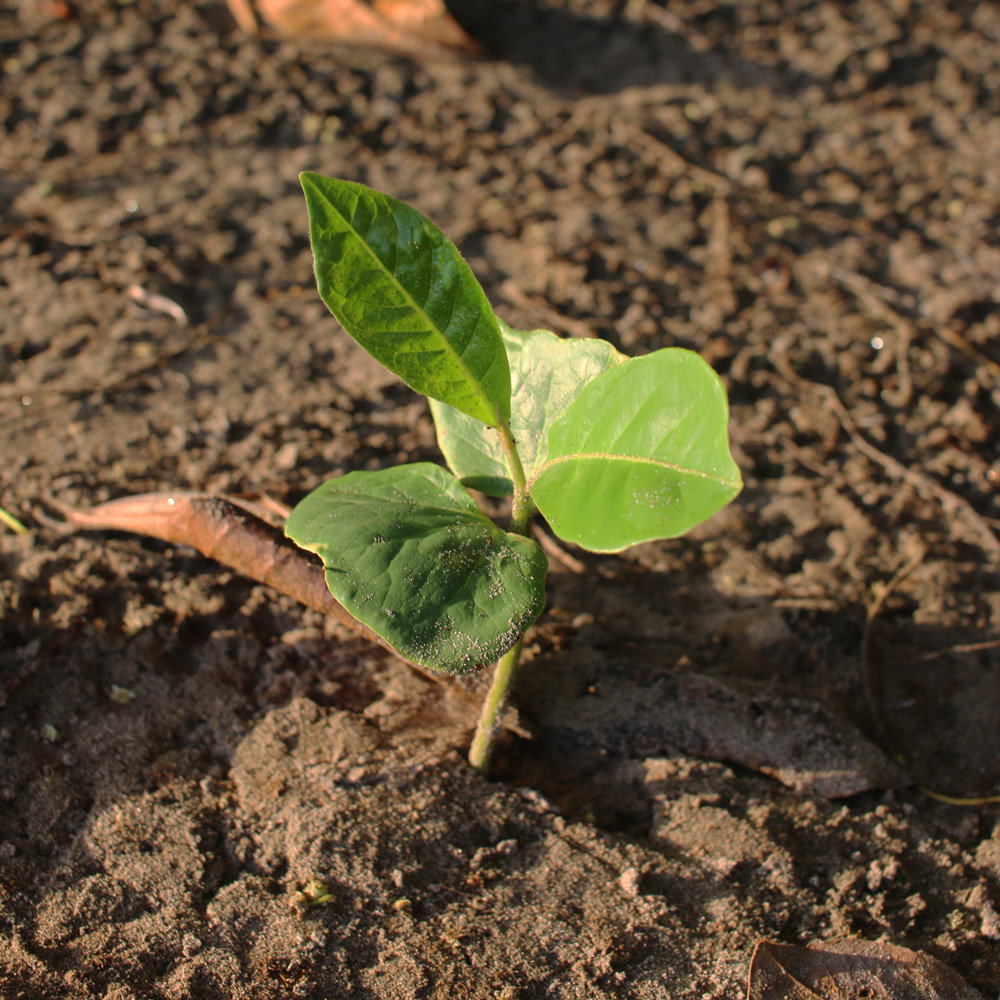
It grew into this in two years:
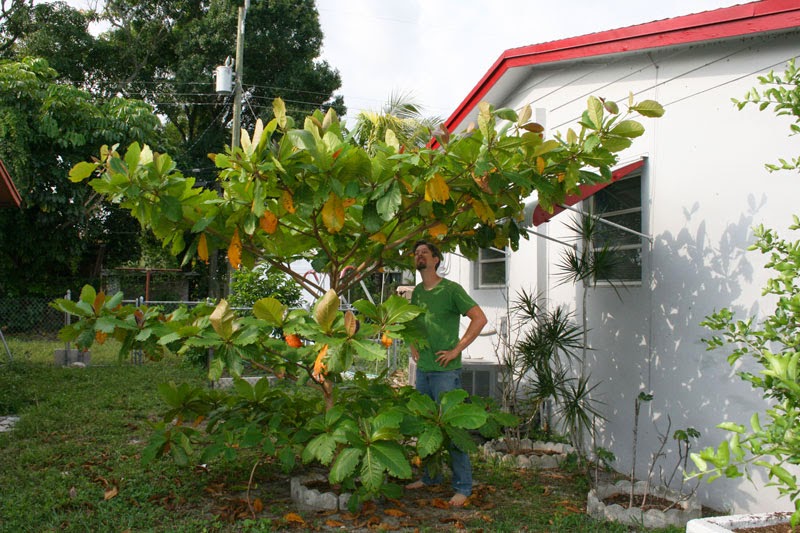
Now it’s easily three times that size.
Sorry Mom!
Cat’s Eye
This one took me a really long time to ID, which is ironic because I once painted a picture featuring this exact species. See bottom right.
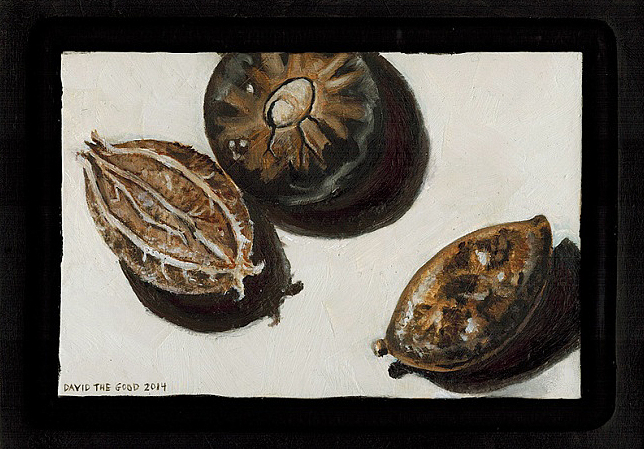
I wracked my brain and took about an hour searching through leguminous tree pods before I nailed it down, thanks to seabean.com. It’s a useful tree and you can read more about it here.
Australian Pine
South Floridians have a love/hate relationship with this species. When I was a kid, I remember them swaying in the breeze at John U. Lloyd State Park. You can see them in this photo.
They are lovely trees, but the cones really hurt bare feet. Inside you’ll find the tiny seeds.
Unfortunately, the Australian pine is really good at establishing itself in South Florida and is now listed as an invasive species.
Despite its appearance, it’s not a pine at all. It’s not even related. And it fixes nitrogen, though it isn’t a legume. Quite a fascinating tree.
Thanks for your patience, Nadia. I hope this helps you decide what to plant. I’ll try to get back to you quicker next time.


2 comments
David, you’re awesome! Thanks so much for the seed information! This morning I have hammered the seed pods open, scarified the Beach Hibiscus seeds and left all of them soaking for 1 day. The Australian Pine did not seem to contain any seeds, but hopefully the concept of hammering them will help sore feet. In the meantime the coconut seeds will serve me as ammo for survival whilst gardening among zombies … Thanks mate :)
[…] remember my post a month or so ago identifying the beach seeds given to my friend […]
Comments are closed.